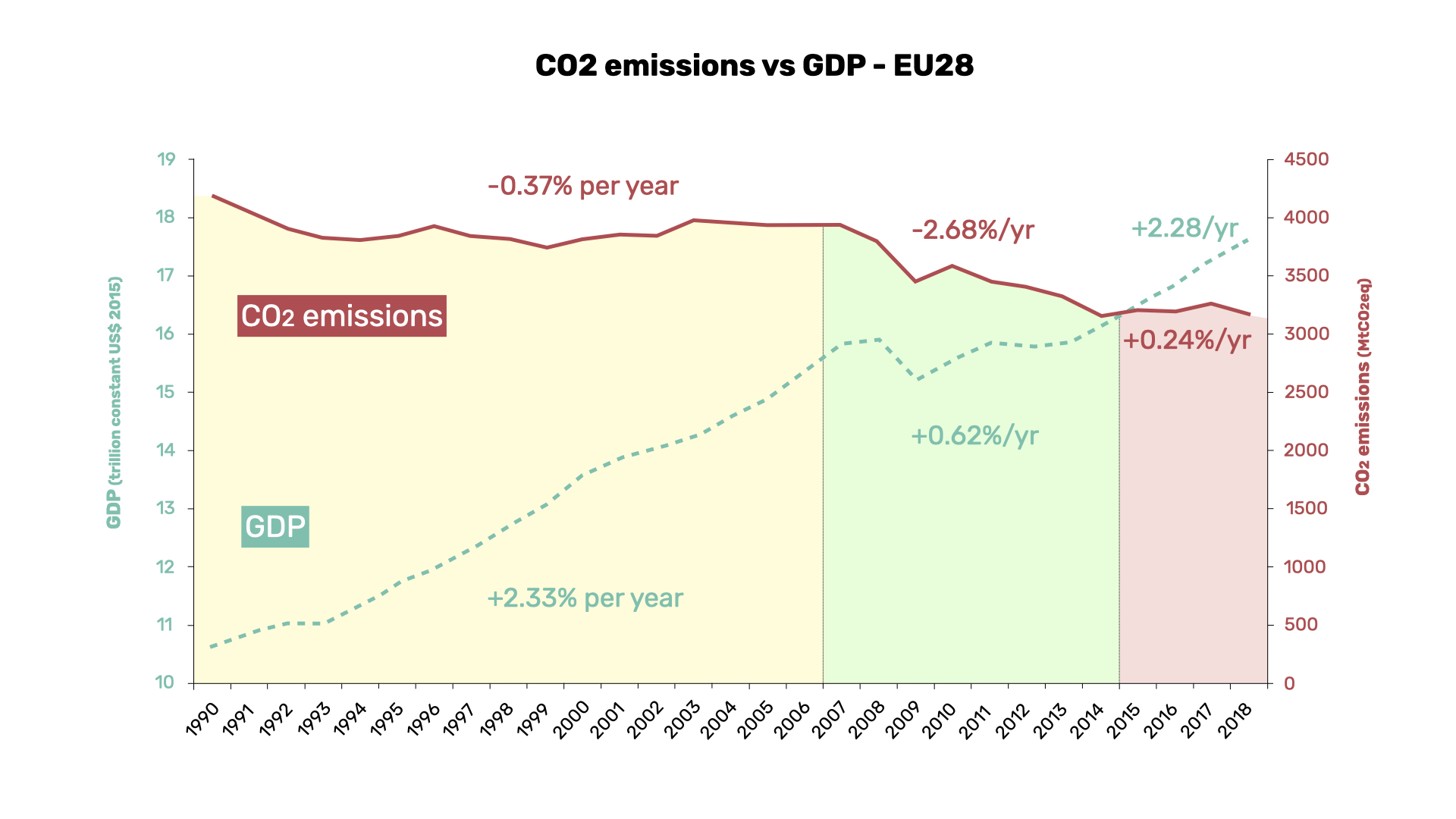A study produced by
Jérôme Cuny
IDH21, Paris, France
Timothée Parrique
School of Economics and Management, Lund University, Sweden
Summary
“France has proven that we can decouple growth and greenhouse gas emissions. Between 2005 and 2018, our country reduced its greenhouse gas emissions by nearly 20% while its national wealth increased by 15%. » Bruno Le Maire, Linkedin, November 2023.
This recent statement from the French Minister of the Economy resonates with the work presented here, analyzing the relationship between GDP and territorial CO2 emissions of the European Union over the last 30 years.
Since 1990, the only period during which CO2 emissions have decreased significantly (-2.7%/year on average) is between 2007 and 2014, when the GDP growth of the European Union fell below 1% (+0.62%/year on average).
Same for France, -2.1%/year in reduction in CO2 emissions with a GDP growth of +0.72%/year between 2007 and 2014. Before and after, growth is above 1%/year and emissions are decreasing very slowly: -0.1%/year between 1990 and 2006 for France.
When we decompose the evolution of CO2 emissions with the Kaya equation, we observe that the energy intensity of GDP (quantity of energy necessary to create added value) and the carbon content of energy ( our level of dependence on fossil fuels) are decreasing too slowly. As soon as GDP growth exceeds 1%, it erases the small emission reductions generated by these two factors. A sort of rebound effect.
If we wish to achieve the ambitious European goal of -55% CO2 emissions in 2030 compared to 1990, the energy intensity of GDP would have to decrease twice as quickly AND the carbon content of energy 4 times as quickly. than in the previous decade.

